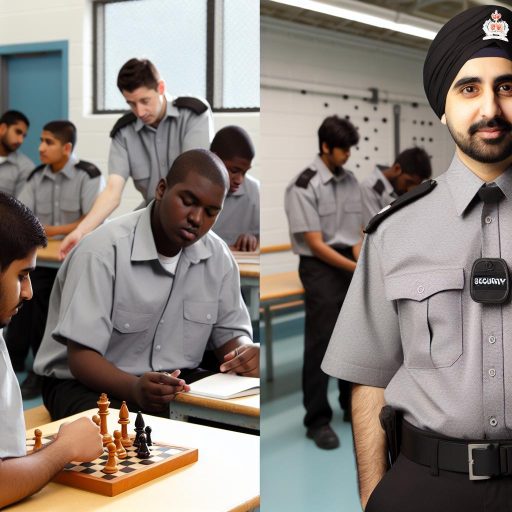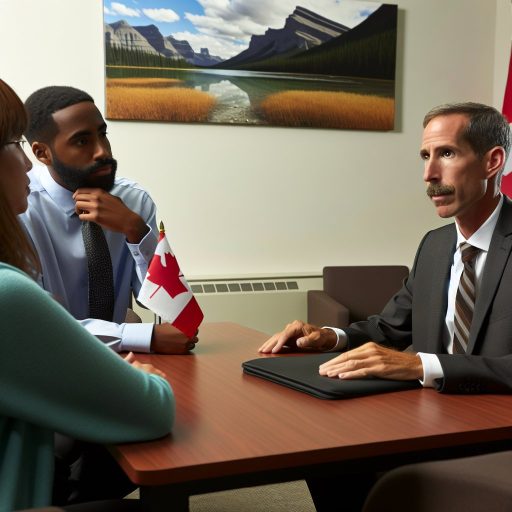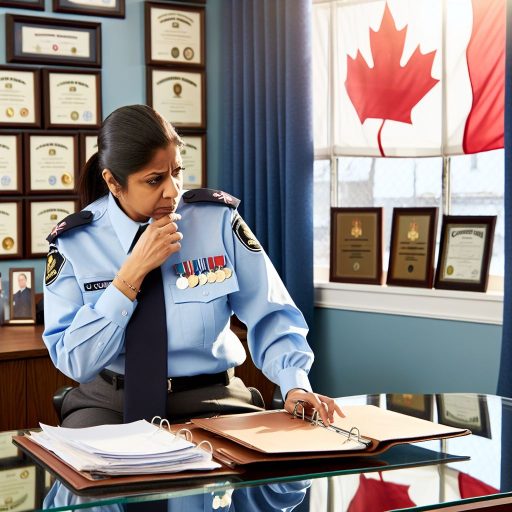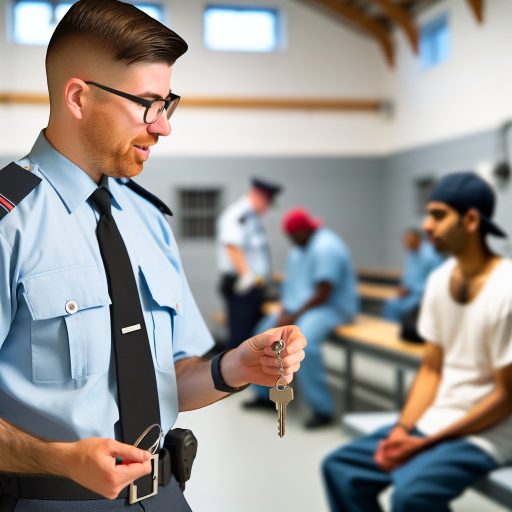Introduction to the Role of a Canadian Border Services Officer
A Canadian Border Services Officer plays a crucial role in national security.
They protect Canada’s borders from illegal activities and threats.
This officer ensures the safety of citizens and travelers alike.
Their primary responsibility is enforcing customs and immigration laws.
They inspect incoming goods and verify travelers’ documentation.
Daily Responsibilities
Each day begins with a briefing about the day’s operations.
Officers prepare for various scenarios they may encounter.
Next, they head to their assigned posts at border crossings.
Their tasks can vary from checking passports to scanning vehicles.
They look for signs of smuggling or illegal entry.
Collaboration with Other Agencies
Border Services Officers frequently collaborate with law enforcement.
This includes working with local police and customs officials.
They also engage with agencies like the Canada Border Services Agency.
Sharing intelligence is vital for effective border security.
Teamwork enhances the efficiency of their operations.
Skills Required
Critical thinking and problem-solving skills are essential.
Officers must remain calm under pressure and make quick decisions.
Strong communication skills improve interactions with travelers.
Additionally, they must possess a keen attention to detail.
These skills help identify potential security threats effectively.
Training and Development
All officers undergo rigorous training upon entry into the service.
The training includes courses on laws, regulations, and procedures.
Continuous learning is crucial for adapting to evolving threats.
Workshops and simulations prepare them for real-life scenarios.
Officers also participate in regular fitness assessments to maintain readiness.
Unlock Your Career Potential
Visualize a clear path to success with our tailored Career Consulting service. Personalized insights in just 1-3 days.
Get StartedOverview of a Typical Workday Schedule
Starting the Shift
A Canadian Border Services Officer begins the day with a briefing.
This meeting includes updates on policy and procedures.
Officers receive information about notable issues at the border.
After the briefing, they gear up for inspections.
Morning Inspections
The morning typically involves monitoring vehicles entering Canada.
Officers question drivers and check documentation thoroughly.
They utilize scanning equipment to identify any contraband.
Attention to detail is crucial during these inspections.
Midday Responsibilities
After morning inspections, officers regroup for a debriefing.
This session highlights successful intercepts or new threats.
Next, they may conduct foot patrols to monitor the area.
Communication with other agencies is essential during this time.
Afternoon Duties
In the afternoons, officers focus on customs compliance checks.
They assess importation processes and verify taxes and duties.
This involves carefully examining goods declared by travelers.
Cooperation with businesses is also a significant part of the job.
End of the Workday
As the day winds down, officers complete their reports.
Documenting all inspections ensures accountability and accuracy.
Finally, they attend a wrap-up meeting to discuss the day.
Preparing for the next shift is also critical during this time.
Morning Routine and Preparation Before Shifts
Waking Up Early
The day begins early for a border services officer.
They wake up around 5:00 AM to prepare for their shift.
This allows ample time for personal grooming and breakfast.
Additionally, it helps them mentally prepare for the day ahead.
Getting Ready
After waking, they prioritize a nutritious breakfast.
Breakfast typically includes high-protein foods and fruits.
Next, they get dressed in their official uniforms.
Uniforms must be clean and pressed for professional appearance.
Moreover, they check all necessary identification and equipment.
Commuting to Work
After getting ready, they leave home around 6:30 AM.
The commute to their designated border location is important.
They often listen to the news or podcasts during their drive.
This helps them stay informed and centered for work.
Pre-Shift Briefing
Upon arrival, they attend a pre-shift briefing.
This briefing covers any recent updates or important announcements.
Officers discuss security concerns and operational changes.
Collaboration among team members fosters better synergy.
Final Preparations
Finally, they check equipment and tools for their shift.
This includes tools like scanners and communication devices.
Ensuring functionality is critical before starting duties.
With everything in order, they are ready for another day.
Gain More Insights: How Ombudsmen Uphold Rights and Justice in Canada
Arrival at the Border
First Tasks Upon Arrival
As a border services officer, my day begins early.
I arrive at the border control station just before my shift starts.
My first task involves checking my equipment and supplies.
Additionally, I review any pending cases from my previous shift.
Next, I check the daily briefing for updates and critical alerts.
Initial Inspections and Procedures
Once briefed, I begin the inspection of incoming vehicles.
I approach each car with a keen eye and a friendly demeanor.
I greet the drivers while quickly assessing their state of mind.
If I notice any suspicious behavior, I make a note.
Documentation Verification
After greeting the driver, I request their identification documents.
While reviewing these documents, I look for inconsistencies.
For instance, matching names and photos is crucial.
If necessary, I may ask additional questions about their trip.
Search Procedures
If I still have concerns after inspecting documents, a vehicle search follows.
This may involve a simple examination or a more comprehensive search.
During searches, I focus on common areas for hidden items.
These areas often include the trunk and under seats.
Respecting Borders and Regulations
Throughout each interaction, I maintain professionalism and respect.
It’s vital that people feel safe and respected at the border.
After inspections, I ensure any travelers have clear instructions.
For instance, I explain any delays or further processes they must complete.
Find Out More: How to Prepare for a Veterans Affairs Officer Interview
Interactions with Travelers and Customs Declarations
Greeting Travelers
As travelers approach the border, officers warmly greet them.
The goal is to establish a friendly atmosphere from the start.
Smiles and eye contact foster a positive interaction.
Assessing Customs Declarations
Officers inspect customs declarations upon request.
Every declaration must be evaluated for accuracy and honesty.
Inconsistencies may raise red flags for further questioning.
Asking Relevant Questions
Travelers often provide varying responses to questions.
Officers tailor their inquiries based on initial information.
This ensures thorough checking of every situation.
Checking Compliance with Regulations
Officers verify if travelers comply with customs regulations.
They confirm declared purchases and personal goods.
Any non-compliance could lead to consequences.
Handling Special Cases
Some travelers present unique challenges during inspections.
Officers address issues involving pets, medications, or food.
Understanding regulations helps them assist travelers efficiently.
Advising on Best Practices
Officers often educate travelers on customs rules.
This includes limits on items brought into Canada.
Knowledgeable travelers help maintain the integrity of borders.
Documenting Interactions
Every interaction requires proper documentation.
Officers record details of travelers’ customs declarations.
Documentation aids in monitoring and planning future approaches.
Providing Assistance and Resources
Travelers occasionally need additional assistance.
Officers guide them to resources for questions or concerns.
Offering brochures and information pamphlets supports travelers.
You Might Also Like: How Ombudsmen Facilitate Fairness in Disputes
Threat Assessment Procedures and Dealing with Contraband
Overview of Threat Assessment
Threat assessment plays a crucial role in border security.
Officers evaluate risks related to individuals and goods.
They gather intelligence to inform their decisions.
This process involves collaboration with other agencies.
Moreover, certain behaviors trigger increased scrutiny.
Identifying Red Flags
Identifying red flags helps officers maintain security.
Travelers displaying unusual behavior often receive attention.
Officers look for inconsistencies in travel documentation.
Physical signs of distress may indicate underlying issues.
Additionally, suspicious cargo warrants further investigation.
Methods of Conducting Inspections
Officers conduct thorough inspections of vehicles and cargo.
They utilize both manual checks and technology.
X-ray machines assist in uncovering hidden items.
Canine units provide crucial support in detecting contraband.
Every inspection aims to ensure safety and compliance.
Dealing with Contraband
Handling contraband is a critical aspect of border work.
When contraband is identified, officers follow strict protocols.
First, they secure the area to prevent further issues.
Next, they document findings and gather evidence.
Collaboration with law enforcement often follows.
Consequences of Contraband Discovery
Discovery of contraband leads to serious legal implications.
Violators may face fines or criminal charges.
Moreover, officers ensure the safe disposal of hazardous materials.
They also provide resources for educational purposes.
This process deters future violations and enhances security.
You Might Also Like: Path to Becoming a Veterans Affairs Officer in Canada
Collaboration with Law Enforcement and Other Agencies
Strengthening Connections
Collaboration is essential for a successful border services operation.
Border services officers work closely with local police forces.
They share information and resources to enhance security measures.
Moreover, cooperation with federal agencies is crucial.
Agencies like the Royal Canadian Mounted Police play a vital role.
Joint Operations and Training
Joint operations increase the effectiveness of border security initiatives.
These operations often target specific threats, such as smuggling.
Officers undergo joint training with other law enforcement personnel.
This training enhances their skills and ensures unified responses.
Information Sharing Protocols
Efficient information sharing is paramount for safety.
Border services officers rely on real-time data from various sources.
This data includes alerts about suspicious activities.
Furthermore, agencies utilize databases for background checks.
Community Engagement
Community engagement fosters trust and cooperation.
Border services officers often participate in local events.
They create awareness about their roles within the community.
This engagement encourages residents to report suspicious activities.
Impact on National Security
Collaboration with other agencies strengthens national security efforts.
By pooling resources, they prevent threats from escalating.
Each agency brings unique strengths to the table.
Ultimately, teamwork enhances the safety and security of Canada.
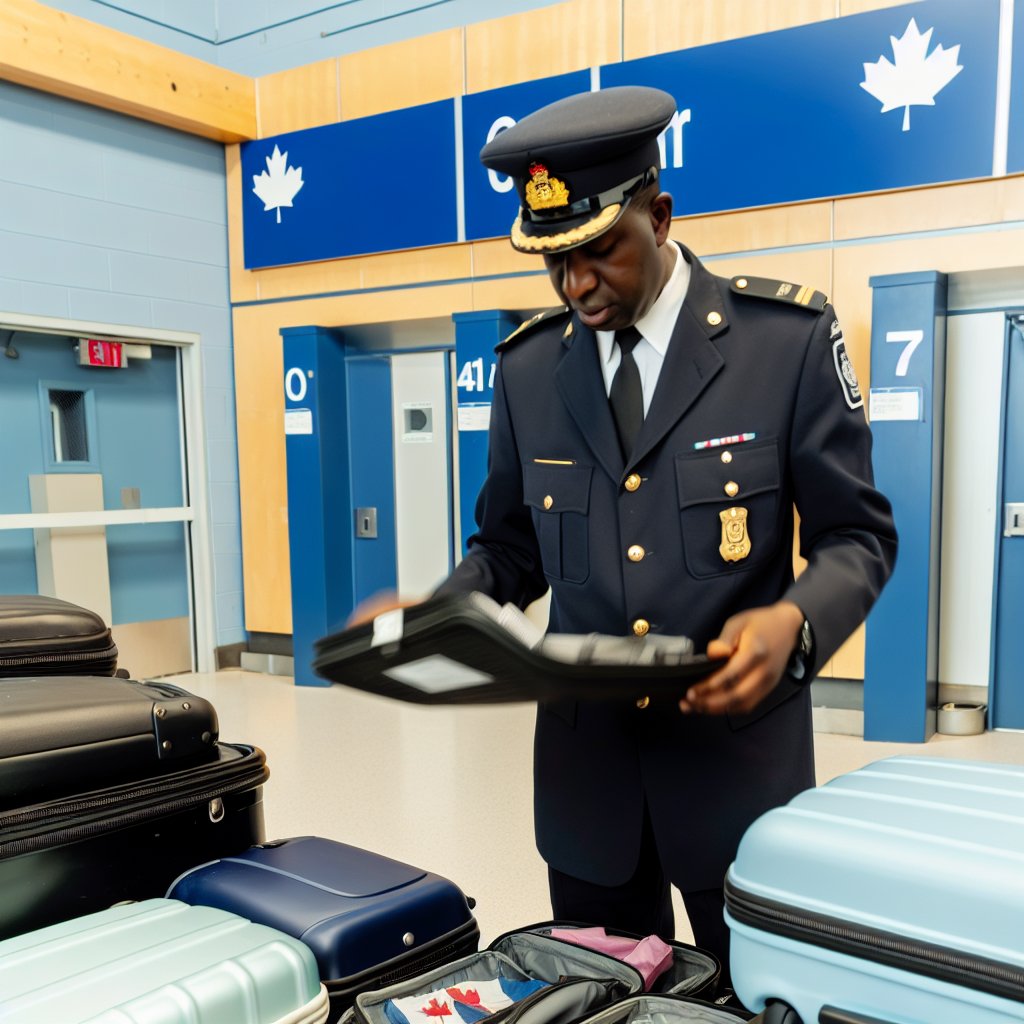
Monitoring Technology and Equipment Used at Border Crossings
Advanced Scanning Systems
Canadian border services officers utilize advanced scanning systems for inspections.
These systems include X-ray and gamma ray imaging technologies.
Additionally, they can quickly assess the contents of vehicles and cargo.
Such technologies enhance efficiency and accuracy in the inspection process.
Biometric Identification Tools
Biometric identification tools play a vital role in border security.
Officers often use fingerprint scanners and facial recognition software.
These devices help verify identities of travelers efficiently.
Consequently, they enhance overall safety at border crossings.
Surveillance Systems
Border crossings are equipped with extensive surveillance systems.
CCTV cameras monitor activities in real-time.
These systems deter illegal activities and document incidents.
Moreover, officers rely on video feeds to assist during inspections.
Automated Border Control Systems
Automated border control systems streamline the entry process.
These kiosks allow travelers to process their information independently.
As a result, they reduce wait times and enhance border efficiency.
Officers can focus more on risk assessment and inspection activities.
Communication and Coordination Tools
Effective communication tools support officers during their duties.
Officers use radios and instant messaging systems to coordinate efforts.
This ensures timely information exchange among different units.
Consequently, it enhances the response time for any incidents.
Training and Development Resources
Continuous training in technology is crucial for border services officers.
They receive updated training on the latest monitoring equipment.
This prepares officers to make informed decisions during inspections.
Ultimately, it strengthens the effectiveness of border security operations.
Challenges Faced in the Role
High-Stress Situations
Every day presents unique challenges at the border.
Officers encounter situations that can escalate rapidly.
For instance, they may face aggressive individuals attempting to cross.
Additionally, they often deal with emotionally charged travelers.
These interactions require calmness and quick thinking.
Moreover, officers must balance enforcement with customer service.
Every decision can have significant implications for public safety.
Furthermore, officers are trained to assess threats effectively.
They must remain vigilant at all times when on duty.
Decision-Making Under Pressure
Officers frequently make critical decisions quickly.
This aspect of the job demands strong situational awareness.
For example, they analyze documents and traveler behavior on the spot.
Officers often rely on their training and instincts to guide them.
They use established protocols to navigate complex situations.
Each interaction can lead to a variety of outcomes.
Therefore, effective communication skills are essential.
They work collaboratively with other law enforcement agencies.
Ultimately, their choices can impact the safety of many people.
Importance of Continuing Education and Training in Border Security
Adapting to Evolving Threats
Border security is a dynamic field that constantly evolves.
New threats emerge regularly, requiring updated knowledge and skills.
Continued education helps officers stay ahead of these challenges.
For instance, understanding cyber threats is increasingly vital.
Training in these areas ensures effective response strategies.
Enhancing Professional Development
Continuing education fosters personal and professional growth.
It equips officers with advanced techniques and methodologies.
Courses can include topics like conflict resolution and negotiation skills.
Such knowledge improves on-the-job performance and decision-making.
Moreover, it can lead to career advancement opportunities.
Building Public Trust and Confidence
Competence boosts public confidence in border security operations.
Well-trained officers instill trust among travelers and businesses.
This trust is essential for maintaining efficient border management.
Training programs also emphasize community engagement strategies.
Officers learn how to communicate effectively with the public.
Collaboration with Other Agencies
Border security does not operate in isolation.
Collaboration with other security and law enforcement agencies is crucial.
Continuing education provides insights into joint operational strategies.
Working together enhances overall national security efforts.
Training also includes sharing best practices across agencies.
Utilizing Technology Effectively
Technology plays a significant role in modern border security.
Officers must be equipped to utilize the latest tech tools.
This includes understanding automated systems for tracking and monitoring.
Continuing education focuses on integrating technology with traditional practices.
Training ensures effective use of data analysis and surveillance systems.
The Importance of a Border Services Officer
Role in National Security
The work of a border services officer plays a vital role in national security.
They are the first line of defense against illegal activities.
Moreover, they help to prevent the entry of dangerous individuals into Canada.
These officers screen travelers and goods at border crossings.
Through careful inspections, they spot potential threats quickly.
Additionally, they collaborate with other agencies like customs and immigration.
This cooperation enhances the overall efficiency of border security.
Contribution to Public Safety
Public safety hinges on the effective enforcement of border regulations.
Border services officers deter human trafficking and drug smuggling.
Beyond enforcing laws, they educate the public about security measures.
Engaging with the community fosters trust between citizens and officers.
As a result, communities feel more secure and informed.
This awareness contributes to a safer environment for everyone.
Proactive Measures Taken
Officers implement various proactive measures daily.
They analyze data trends to anticipate security threats.
Additionally, training ensures they stay updated on the latest procedures.
This preparedness empowers them to act swiftly in emergencies.
They also conduct public outreach to raise awareness about border safety.
Impact on National Safety
The profound impact of border services officers on national security cannot be overstated.
Through their vigilant efforts, they maintain the safety of Canada’s borders.
Consequently, their work reinforces public confidence in safety measures.
Ultimately, they protect both Canada and its citizens, making their role essential.

